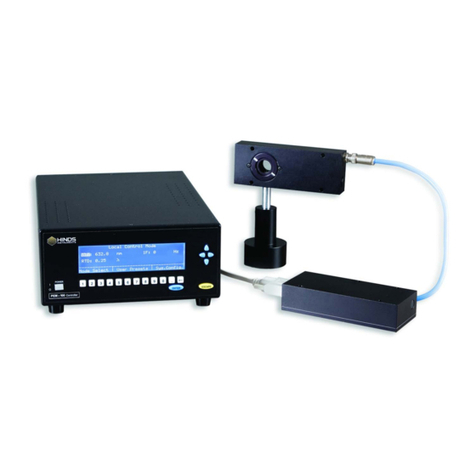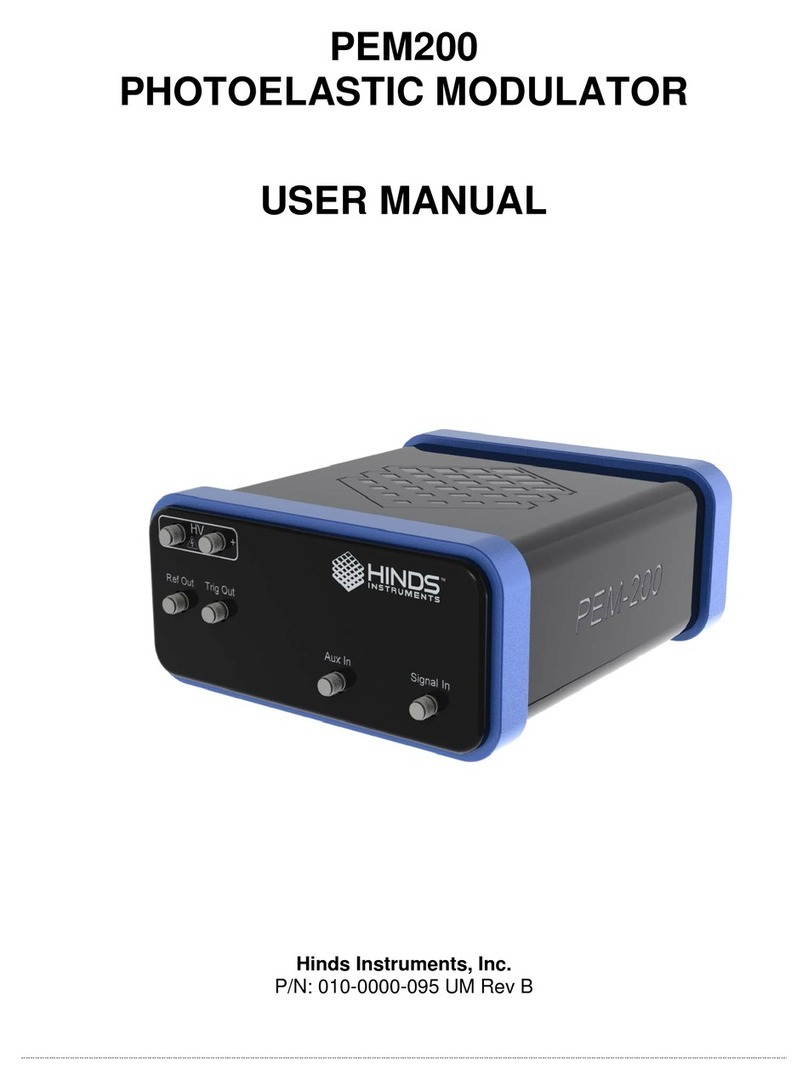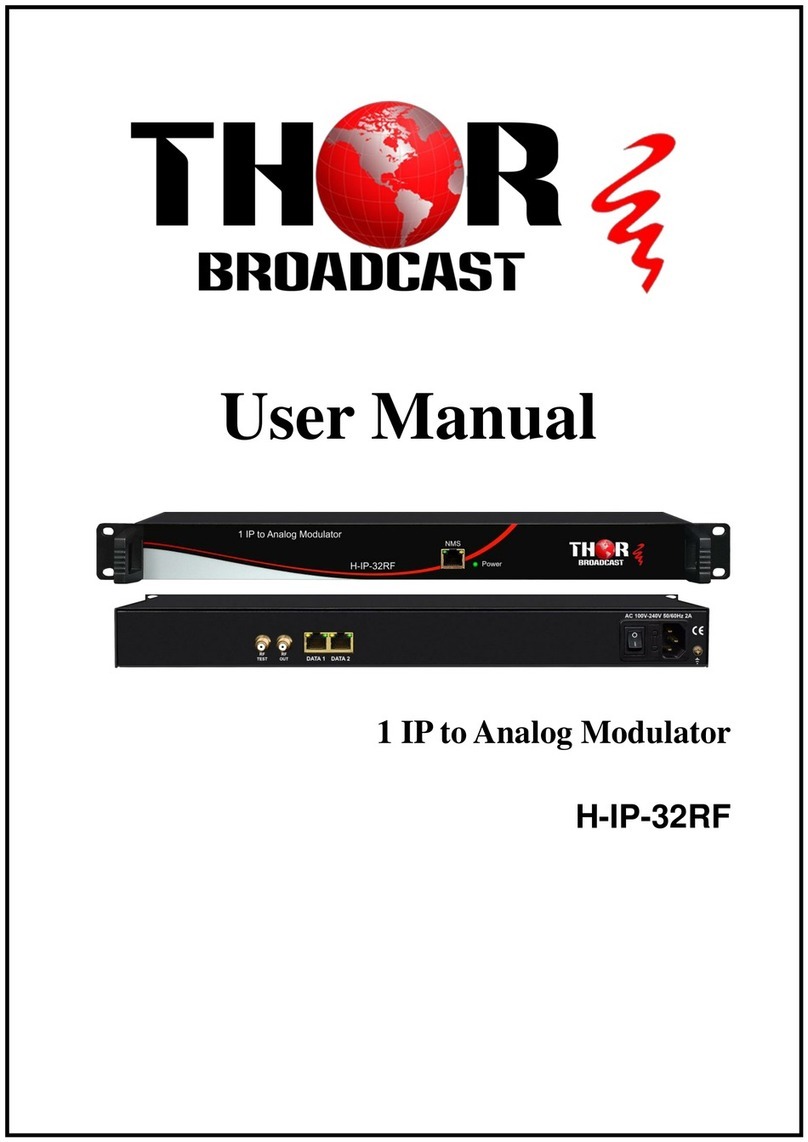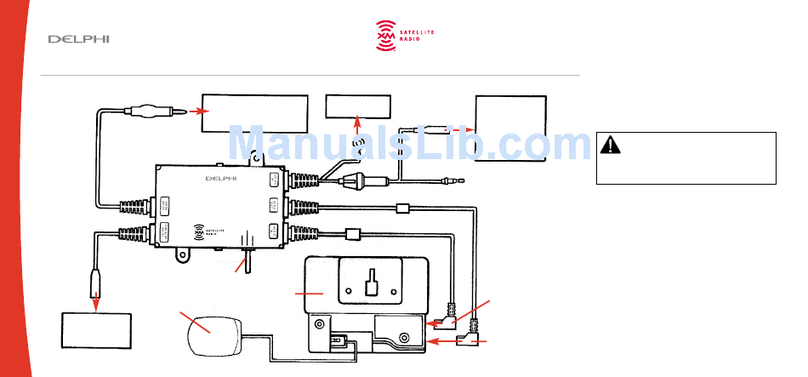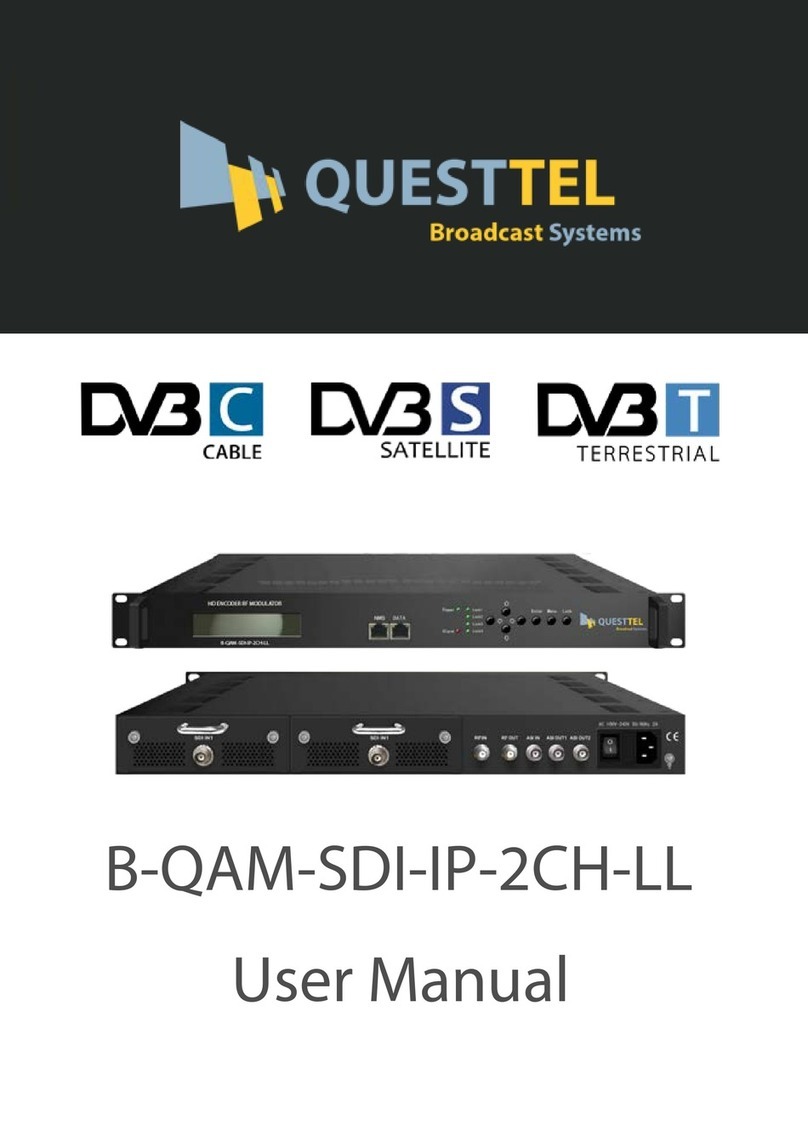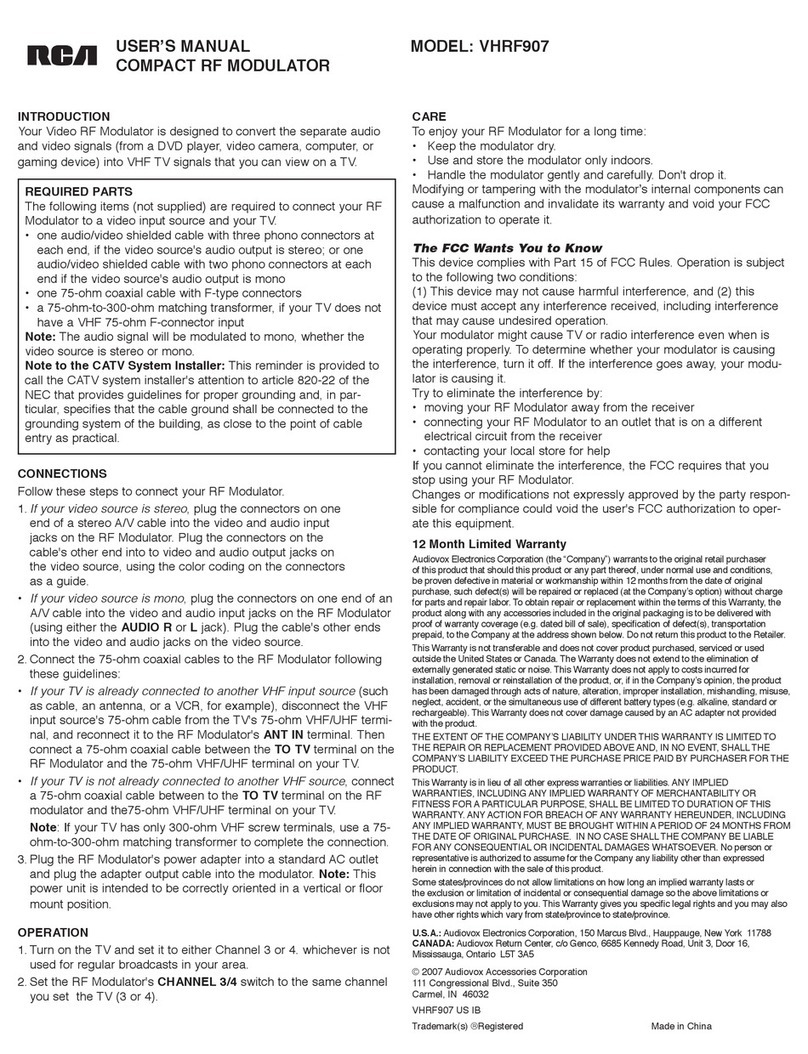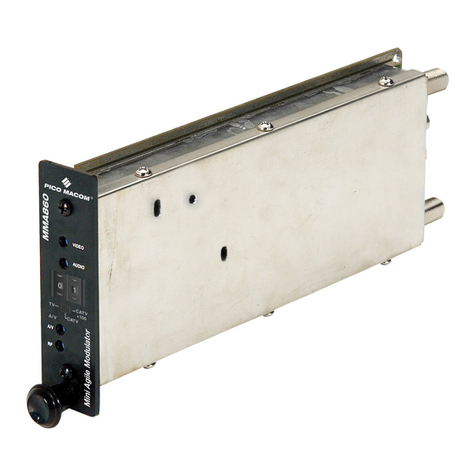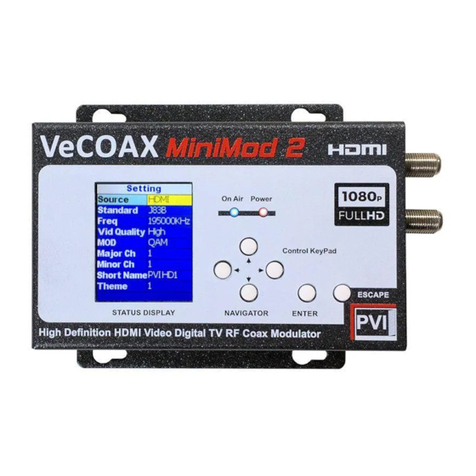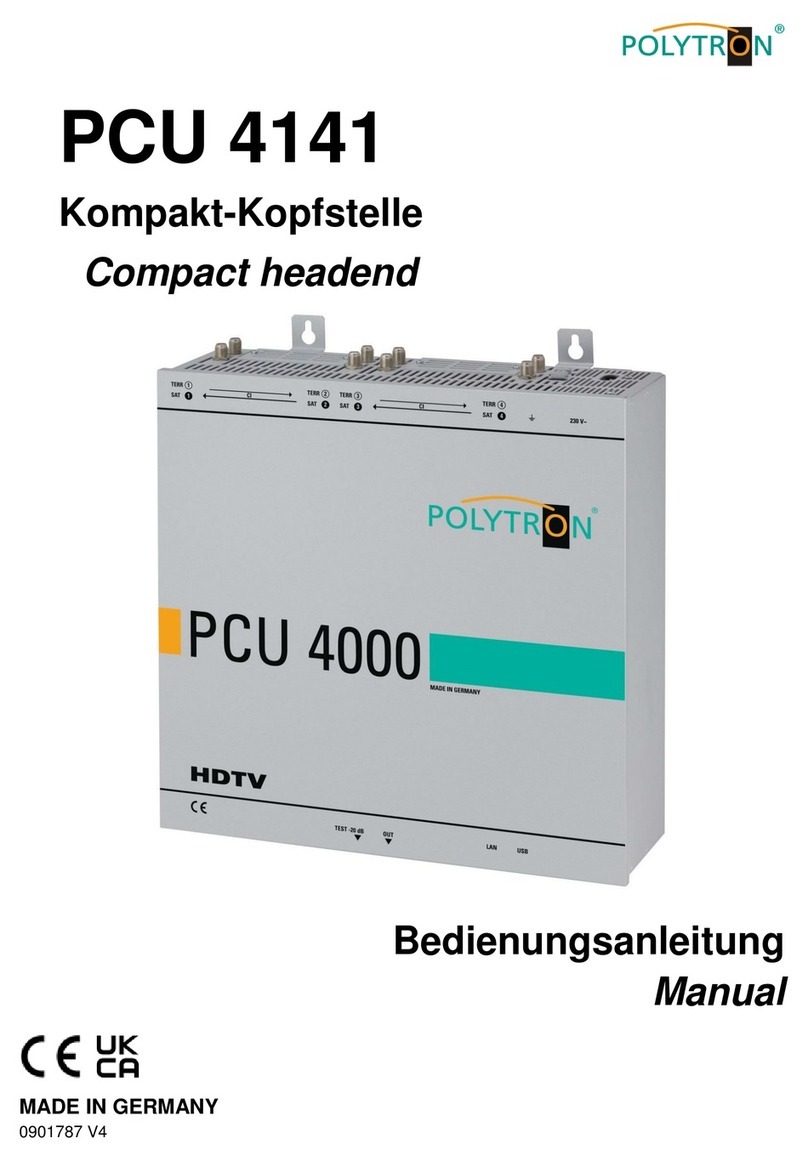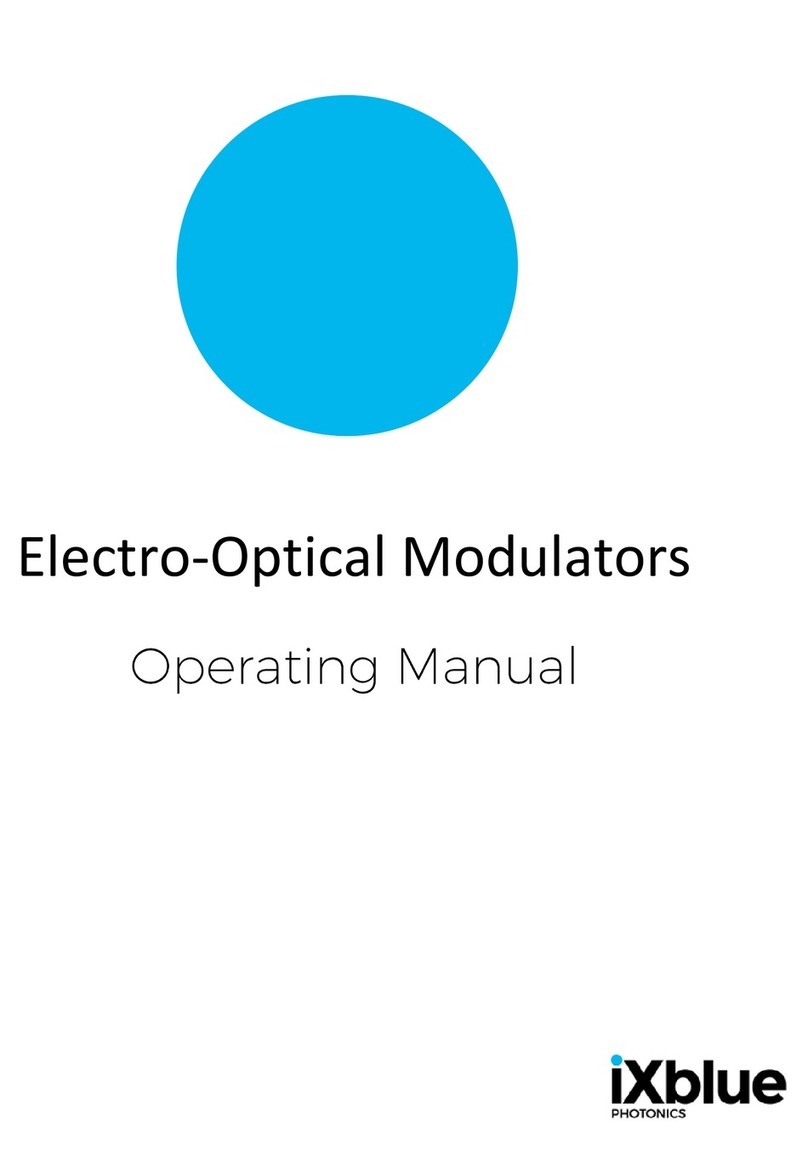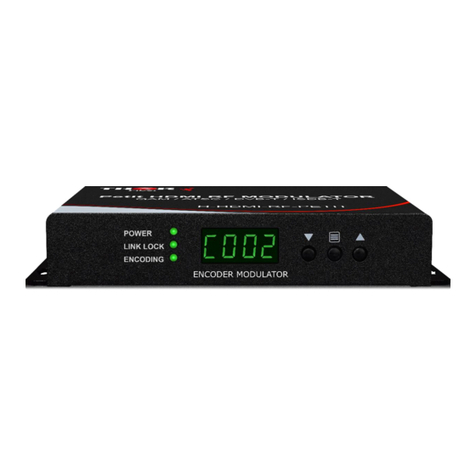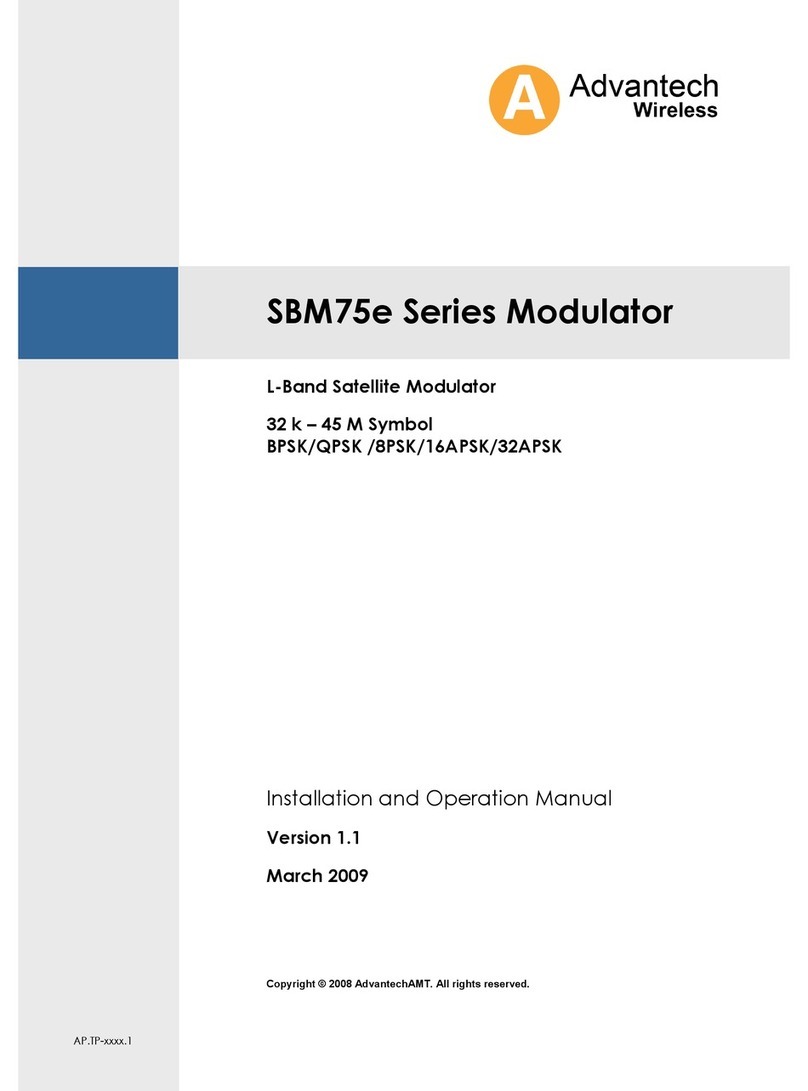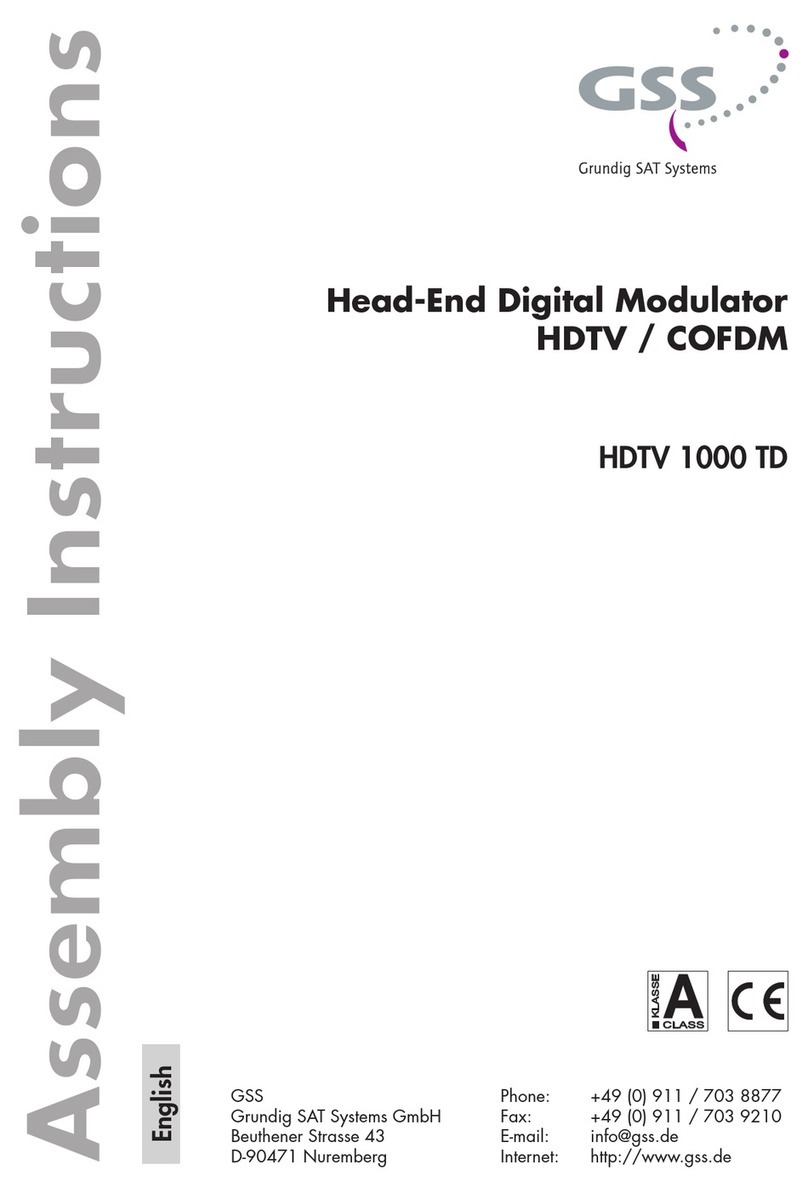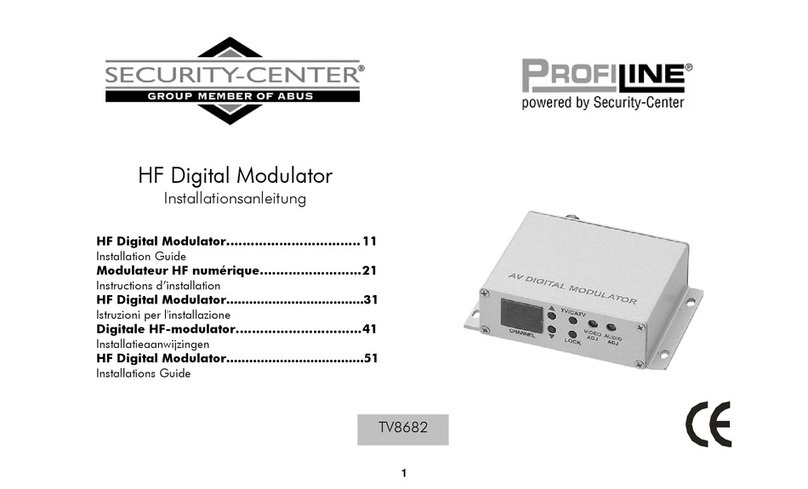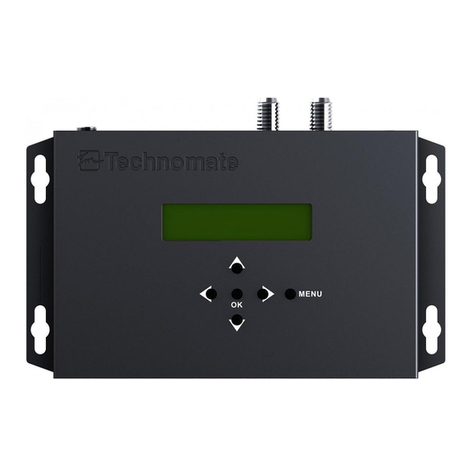Hinds Instruments PEM-CSC User manual

PEM-CSC
PHOTOELASTIC MODULATOR
USER MANUAL
Hinds Instruments, Inc.
P/N: 010-0000-114 UM Rev B

Copyright © 2023 by Hinds Instruments, Inc.
THIS DOCUMENT IS PROVIDED “AS IS” WITH NO WARRANTIES
WHATSOEVER, INCLUDING ANY WARRANTY OF MERCHANTABILITY,
FITNESS FOR ANY PARTICULAR PURPOSE, OR ANY WARRANTY OTHERWISE
ARISING OUT OF ANY PROPOSAL, SPECIFICATION OR SAMPLE. All rights
reserved. No part of this publication may be reproduced, stored in a retrieval system,
or transmitted, in any form by any means, electronic, mechanical, by photocopying,
recording, or otherwise, without the prior written permission of Hinds Instruments,
Inc.
Information furnished by Hinds Instruments, Inc. is believed to be accurate and
reliable; however, no responsibility is assumed by Hinds Instruments, Inc. for its use;
nor for any infringements of patents or other rights of third parties which may result
from its use. No license is granted by implication or otherwise under any patent
rights of Hinds Instruments, Inc.
In all respects, the English version of this manual is controlling.
The PEM-CSC is covered by the following US patents: (1) 11,307,438, (2)
8,537,476, (3) 7,800,845, (4) 6,906,844
PEMLabs, Hinds Instruments and the Hinds Instruments, Inc. graphic logo are
trademarks of Hinds Instruments, Inc.
*Third-party brands and names are the property of their respective owners.

CAUTION!
DO NOT turn on your modulator
unless the optical head and the
electronic head are connected by
the head-to-head interconnect
cable.
SERIOUS DAMAGE MAY RESULT!


Table of Contents
Table of Contents..........................................................................................................1
Operators’ Safety Summary .........................................................................................3
Terms.....................................................................................................................3
PEM-CSC Controller Labels .................................................................................3
DC Power Supply..................................................................................................3
Do Not Operate Without Cover.............................................................................4
Unpacking the PEM CSC ..............................................................................................5
Shipping Damage Check ......................................................................................5
Unpacking the PEM Optical Head........................................................................6
Special Instructions for I/FS50 Optical Head.......................................................................6
Special Instructions for Series II Optical Heads ..................................................................7
Series II FS Optical Heads ..................................................................................................7
Series II ZS50 & ZS42 Optical Heads.................................................................................8
Series II ZS37 Optical Heads..............................................................................................9
1 Introduction..............................................................................................................10
Overview..............................................................................................................10
2 PEM-CSC Controller.................................................................................................11
PEM-CSC Controller Front Panel.......................................................................11
PEM-CSC Controller Front Panel Buttons ........................................................................11
PEM-CSC Controller Rear Panel ........................................................................12
PEM-CSC Controller Rear Panel Connections .................................................................12
3 Modulator Head Assembly ......................................................................................13
Optical Head........................................................................................................13
Model I/FS50, 60 Optical Head Dimensions .....................................................................13
Model II/FS42, 47, 50 Optical Head Dimensions ..............................................................14
Model II/FS50, 60 Optical Head Dimensions ....................................................................14
Model II/ZS37, 42, 50 Optical Head Dimensions ..............................................................15
Model II/FS74, 84 Optical Head Dimensions ....................................................................15
Electronic Head...................................................................................................16
4 Initial Set-Up.............................................................................................................17
Connecting the PEM Optical and Electronic Heads..........................................17
Optical Bench Set-up..........................................................................................20
Functional Check...............................................................................................................20
5 PEM Control Software..............................................................................................22
Installation...........................................................................................................22
Setup Running...................................................................................................................23
Setup Complete.................................................................................................................23
PEM CSC Control Software........................................................................................24
6 Communication Protocol.........................................................................................31
7 Troubleshooting.......................................................................................................36
8 Maintenance .............................................................................................................37
Calibration...........................................................................................................37
Adjustment of Peak Retardation Calibration .....................................................................37
Maintenance........................................................................................................37
Cleaning...............................................................................................................38

2 PEM CSC User Manual
Recommended Optics Cleaning Solutions .......................................................................38
Cleaning the Optics...........................................................................................................38
A Calibration................................................................................................................41
PEM CSC Calibration..........................................................................................41
Calibration Theory..............................................................................................42
Light Sources for Modulator Calibration...........................................................43
Calibration Using an Oscilloscope....................................................................44
Multiple Reflection Techniques .........................................................................47
Static Waveplate Techniques.............................................................................47
Bessel Function Zero Methods..........................................................................48
Bessel Function Ratio Methods.........................................................................49
Parallel Polarizer Calibration at a Single Wavelength......................................50
B Specifications..........................................................................................................54
General- Controller .............................................................................................54
Parameter Specifications ...................................................................................54
Input / Output Specifications .............................................................................54
Environmental.....................................................................................................55
C Optical Head Specifications ...................................................................................56
D User Support Information.......................................................................................57
PEM CSC Limited Warranty................................................................................57
Exclusions.........................................................................................................................57
Overview of the PEM CSC Help System............................................................58
Return For Repair Procedure.............................................................................59
Packaging .........................................................................................................................59
Items To Include................................................................................................................59
Shipping Arrangements.....................................................................................................59
Return Shipping Address ..................................................................................................60
Shipping Costs..................................................................................................................60

Operators’ Safety Summary
The general safety information in this summary is for operators of the PEM CSC
Photoelastic Modulator System. Specific warnings and cautions may be found
throughout the manual where they apply, but may not appear in this summary.
Terms
WARNING statements identify conditions or practices that could result in personal
injury or loss of life.
CAUTION statements identify conditions or practices that could result in damage to
the equipment or other property.
NOTICE statements identify conditions or practices that are important in proper use
of the equipment to get the expected results.
PEM-CSC Controller Labels
The serial number, user safety warning, and CE certification labels are located on
the PEM-CSC Controller rear panel.
DC Power Supply
This product is intended to operate from a DC power supply at 48 VDC. The main
power input is 100 - 240VAC, 50/60 Hz, 1.4A. A protective ground connection by
way of the grounding connector in the power cord is required for safe operation.
Power line requirements are listed in the specifications section.
The power cord provided with this instrument is less than 3 meters in length.
Use only the power cord and connector specified for your product to work with your
local power outlets. Use only a power cord that is in good condition.
The appliance inlet or plug on cord should always be positioned to be accessible by
the operator. To disconnect all power from the instrument, pull the power cord from
the wall outlet or from the appliance inlet. See Operating Space below for detail.

4 PEM CSC User Manual
Do Not Operate Without Cover
To avoid personal injury, do not operate the PEM-CSC Controller without the cover.
Ensure the controller ventilation openings located on the top and bottom of the
enclosure are clear of any obstructions.

Unpacking the PEM CSC
Shipping Damage Check
Inspect all system components for obvious shipping damage. The PEM CSC is a
precision instrument that can be damaged by rough handling. Your unit was
packaged to minimize the possibility of damage in transit. Therefore, we
recommend that you save the specially designed shipping container for any future
shipment of your modulator unit. In particular, we recommend you save the internal
packing materials for the optical head.
In the event your order arrives in damaged condition, it is important that the following
steps be taken immediately. The title transfers automatically to you, the customer,
once the material is entrusted to the transport company.
1. DO NOT RETURN THE INSTRUMENT TO HINDS INSTRUMENTS, INC. until
the following steps are completed. Failure to follow this request will jeopardize
your claim with the insurance company.
2. If a “Shock Watch” is present on the outer shipping container or anywhere inside,
note the location and the condition of the shock watch. If the shipment receives
handling rough enough to trigger the shock watch, the watch will turn red.
3. Open the container and inspect the contents. Do not throw away the container or
any damaged parts. Try to keep all items in the same condition as originally
received.
4. Notify the Transport Company immediately in writing, preferably by facsimile or
email, about the shipping damage.
5. Wait for the transport company’s representative to inspect the shipment
personally.
6. After inspection, request Hinds Instruments’ permission to return the damaged
instrument by calling the service department at (503) 690-2000 or email to
[email protected]. A return authorization number (RMA) will be
assigned to you. See Overview of the PEM CSC Help System on page 58 for
further contact information.
7. Return approved items to Hinds Instruments Inc. at the following address:
Hinds Instruments, Inc.
7245 NE Evergreen Pkwy
Hillsboro, OR 97124-5850
8. After return permission is given and we receive the instrument, an estimate of the
cost of repair will be sent to you in the event you choose to submit a claim to the
transport company.

6 PEM CSC User Manual
Unpacking the PEM Optical Head
CAUTION
PLEASE USE CARE when unpacking the PEM optical head, for
this assembly is very fragile. Please follow the unpacking
instructions carefully. Unless this is done, the PEM system will
not operate and the optical head may be irreversibly damaged.
Special Instructions for I/FS50 Optical Head
The following unpacking instructions are for an I/FS50 PEM optical head.
Ensure the work surface is clean and free of dust
Using a #1 Phillips screwdriver, remove the shipping disk
The alternate side of the Optical Head is covered by tape to prevent dust and
other particles from entering the enclosure. This can be easily removed.
Unpacking I/FS50 Optical Head
Shipping Disk
Qty 4 screws

Special Instructions for Series II Optical Heads
Included in all orders for Series II Optical Heads is a packet outlining instructions
for removing the Transducer Safety Clip.
A Phillips screwdriver has been included in the packet for removal of the
outer lid of the optical enclosure
Please follow the provided instructions carefully to avoid damaging the
optical assembly
Series II FS Optical Heads
Unpacking Series II FS Optical Head

8 PEM CSC User Manual
1. Remove the 4 lids screws using the provided screwdriver.
2. Gently pull yellow clip out. Grab the provided tabs on the lower half of the
clip. There is a split in the clip under the transducer. Separate the clip and lift
it out from around the transducer. Take care when removing a clip near
transducer wires. Save clips for future return of unit.
NOTE: DO NOT TURN OPTICAL HEAD OVER WHILE LID IS OFF –
OPTICS WILL FALL OUT
3. Replace lid. Extra screws are provided.
Series II ZS50 & ZS42 Optical Heads
Unpacking II/ZS50 or II/ZS42 Optical Head
1. Remove the 4 lids screws using the provided screwdriver.
2. Gently pull yellow clip out. Yellow supports cup the ends of the transducer
and can be easily slid off the ends. Be careful to not lift the transducer
when removing clips.

NOTE: DO NOT TURN OPTICAL HEAD OVER WHILE LID IS OFF –
OPTICS WILL FALL OUT
3. Replace lid. Extra screws are provided.
Series II ZS37 Optical Heads
Unpacking II/ZS37 Optical Head
1. Remove the 4 lids screws using the provided screwdriver.
2. Gently pull yellow clip out. Grab the provided tabs on the lower half of the clip.
There is a split in the clip under the transducer. Separate the clip and lift it out
from around the transducer. Take care when removing a clip near transducer
wires. Save clips for future return of unit.
NOTE: DO NOT TURN OPTICAL HEAD OVER WHILE LID IS OFF –
OPTICS WILL FALL OUT
3. Replace lid. Extra screws are provided.
Split

1
Introduction
Overview
The PEM CSC Photoelastic Modulator is an instrument used for modulating or
varying (at a fixed frequency) the polarization of a beam of light. Hinds photoelastic
modulators are used for measurement of circular and linear dichroism, birefringence,
optical rotation, ellipsometry, polarimetry, reflection difference spectroscopy and
FTIR double modulation.
The PEM CSC principle of operation is based on the photoelastic effect, in which a
mechanically stressed sample exhibits birefringence proportional to the resulting
strain. Photoelastic modulators are resonant devices, each producing oscillating
birefringence at a fixed frequency in the low frequency ultrasound range (20 kHz to
100 kHz). These factors result in a number of very useful advantages, which are
unique to the PEM including wide acceptance angle, large aperture and high
modulation ”purity.”

2
PEM-CSC Controller
PEM-CSC Controller Front Panel
PEM-CSC Front Panel
PEM-CSC Controller Front Panel Buttons
On/Off: Rocker switch powers on the unit. When powered, the “Pwr” LED will
be solid and green.
Power In: DC power input, 48VDC, 2A
USB: The USB label is located above the input of the
USB 2.0 port for communication with any Windows 10
or newer computer. Contact Hinds Instruments for
assistance with Windows 7.
Limit LED: The limit LED will stay on and red if the PEM heads are in
overload/limit mode. If the limit is enabled, check all connections between
controller, electronic head and optical head. If the head-to-head cables have
been disconnected, please contact Hinds Instruments. If the unit is recovered,
re-initialize the controller to PC connection.
Data LED: The data LED will flash yellow whenever data is being sent to or
from the controller over USB.
Pwr LED: The power LED will stay on and green if the controller is powered
on.

12 PEM CSC User Manual
PEM-CSC Controller Rear Panel
PEM-CSC Rear Panel
PEM-CSC Controller Rear Panel Connections
1f Output: BNC female connector provides TTL output of PEM, first harmonic
frequency.
2f Output: BNC female connector provides TTL output of PEM, second
harmonic frequency.
Driver Control: This female DB9 connector connects the controller to the PEM
electronic head via the provided Head-to-Controller cable.

3
Modulator Head Assembly
The transducer-optical element assembly (called the “optical assembly”) is the heart
of a PEM CSC photoelastic modulator. It consists of a rectangular or octagonal
“window” of optical material bonded to a quartz piezoelectric transducer. Both
optical element and transducer are tuned to the same frequency. When connected
to a driver circuit, this assembly oscillates and produces the time-varying
birefringence which is the basis of operation of the PEM.
This assembly, consisting of the optical head, the electronic head, and the cables
which connect them, is a single circuit. It is not intended to operate unless all three
elements are together.
CAUTION
Operation of the electronic head without the optical head
attached may result in damage to the electronic head and
possibly to the controller.
Optical Head
The optical assembly is housed in an enclosure called the “optical head.” The
following figures provide dimensions for various optical head types.
Model I/FS50, 60 Optical Head Dimensions

14 PEM CSC User Manual
Model II/FS42, 47, 50 Optical Head Dimensions
Model II/FS50, 60 Optical Head Dimensions

Model II/ZS37, 42, 50 Optical Head Dimensions
Model II/FS74, 84 Optical Head Dimensions

16 PEM CSC User Manual
The optical head is connected to the electronic driver circuit (housed in the
“electronic head”) by head-to-head interconnect SMA cables. This assembly of the
optical head, the electronic head, and the head-to-head interconnect cables
comprises the “modulator head,” which should be regarded as a single unit.
CAUTION
Operation of the electronic head without the head-to-head
cables and optical head connected should never be attempted.
Such operation will almost certainly result in damage to the
electronic head.
Electronic Head
The electronic head (driver circuit) consists of an active LC tank circuit connected in
parallel to the optical head. The head-to-head interconnect cable contributes
capacitance to the tank circuit. The electronic head also generates a current
feedback signal back to the controller.
Electronic Head Dimensions
Table of contents
Other Hinds Instruments Modulator manuals
